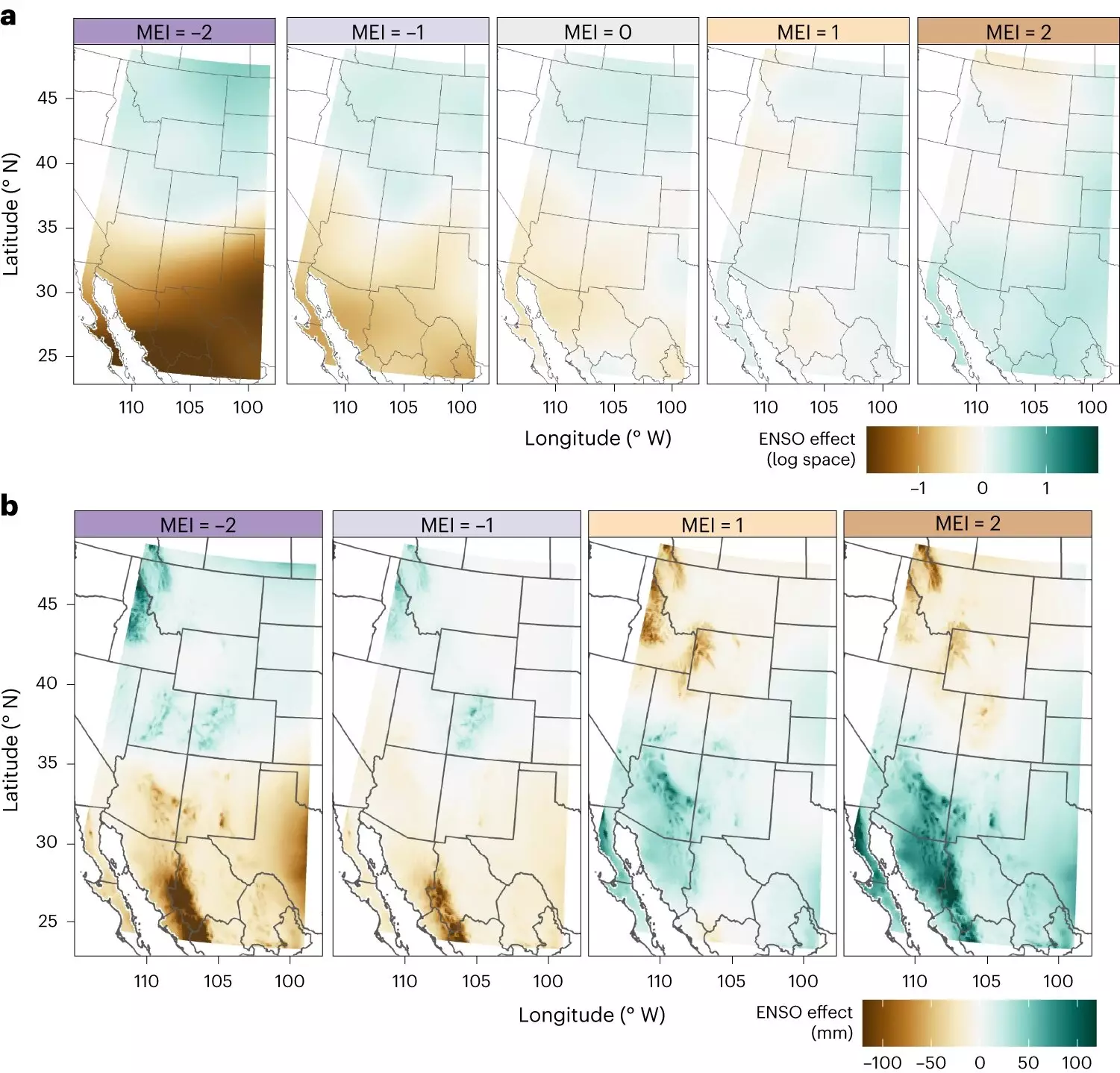A recent study suggests that understanding how mountains influence the precipitation change induced by El Niño and La Niña could greatly improve water conservation planning along the Colorado River in western North America. By analyzing 150 years of rain and snow data and comparing it with historic El Niño-Southern Oscillation (ENSO) patterns, researchers were able to identify increasing winter precipitation trends in the north and decreasing trends in the south. This study sheds light on how mountains both amplify and obstruct precipitation, leading to heavier rainfall on their western side and lower levels of precipitation on their eastern side. The findings have significant implications for water resource management in water-stressed regions.
El Niño and La Niña are two phases of the ENSO, which represents warmer or cooler than normal ocean temperatures in a section of the Pacific Ocean between South America and Australia. These anomalies have a widespread impact on temperatures and precipitation patterns worldwide. However, the intermountain West region in North America has been historically understudied in relation to ENSO patterns. This study aimed to fill this research gap by analyzing the effects of El Niño and La Niña on winter precipitation in the intermountain West.
To investigate the relationship between ENSO and winter precipitation, the researchers used water gauge readings dating back to 1871. These readings were then compared with ENSO trends documented by the Multivariate ENSO Index maintained by the National Oceanic and Atmospheric Administration. By using actual precipitation measurements and considering the specific geographic location and elevation of each gauge, the researchers were able to provide more precise information about the effects of El Niño and La Niña on precipitation in the region.
One of the key findings of the study is that mountains play a significant role in amplifying or obstructing precipitation. Along the intermountain West corridor, mountains can amplify the increase in precipitation during El Niño by 2 to 6 times. This amplification is most evident on the western side of the mountains due to the orographic effect. Moist air from the Pacific moves west to east and is pushed up over the mountains, releasing precipitation. As a result, the western side receives more rainfall, while the eastern side becomes drier.
The study also highlighted regional differences in the response to ENSO. In the north, precipitation change occurs more like a light switch, either happening or not happening, influenced by the blocking effect of the Sierra Nevadas. However, in the south, there is a more continuous scale of precipitation change based on the strength of El Niño or La Niña. Understanding these regional differences is crucial for accurate winter precipitation predictions and water resource management.
Accurate predictions of winter precipitation are essential for water allocation and conservation planning. The findings of this study can help water managers and stakeholders in western North America prepare for upcoming droughts and potentially start conservation efforts ahead of time. By understanding the role of mountains in precipitation patterns and the influence of ENSO, it becomes possible to make more informed decisions regarding water resources.
The researchers hope to collaborate with NOAA to combine data and modeling tools to improve winter precipitation forecasts in the intermountain West. Developing more accurate forecasts will provide valuable insights for water managers, allowing them to better anticipate and plan for future water availability. Given the importance of water in western North America, such advancements are crucial for managing resources, sustaining large cities, and supporting the regional economy.
Understanding how mountains influence the precipitation change induced by El Niño and La Niña is vital for water resource management in western North America. This study provides valuable insights into the amplification and obstruction of precipitation by mountains and highlights regional differences in the response to ENSO. By utilizing these findings and improving winter precipitation forecasts, water managers can make more informed decisions and better prepare for potential droughts in water-stressed regions.


Leave a Reply